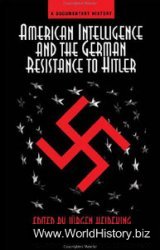The focus of this and each of the preceding these chapters has been on a particular theme, and the evidence has been selected to illustrate or discuss just that thematic segment of life. The social practices for sustaining and/or transforming human life beyond the horizon of mortality can be treated as such a theme. When the same material reappears in different chapters as evidence for different topics, the recurrence may simply reflect the multifaceted character of all material objects. An item associated with healing may be defined as sacred during life, recurrent in daily offerings or activated only at an annual festival, and it may retain that value into the project to secure an eternal afterlife. Health, offering, festival, and eternity belong together but can still be studied separately. Yet the thematic divisions seem so porous and fragile that they deserve renewed scrutiny, nowhere more so than in the modern separation of funerary from nonfunerary. Particularly after separate treatment, topics need to be integrated into renewed holistic study, adequate to the complex and fuzzy practices of life in society. Returning to the house on Abu (Figure 2.16), an outline of brickwork and stones and a scatter of finds bear witness to all the range of human lived experience; the presence of the infant burial under the stones at the entrance room wall asks for our appreciation of fully rounded lives.
Comparative archaeology and anthropology build from the principle of difference, whereby the dividing lines applied in Kemet at the various periods 3000-525 Bc are unlikely to coincide with those in other times and places, including the ones we would apply today. Perhaps for Kemet, the most productive aspect of the archaeological record is the degree of difference, not only between then and now but also between types of evidence within each period. In the construction of sacred space, the same architectural plan might be identified in ancient writings as hut-netjer, “domain of a netjer" or hut-ka, “domain for the ka,” to sustain an individual for eternity (Figure 3.6). Nothing in the plan prepares you for the written evidence that the larger structure may be for an individual, not a deity, challenging the English vocabulary of temple, chapel, and tomb. The written evidence draws clear dividing lines, but at the same time, it elides the underlying similarities which the topographical plan reveals. For a wider archaeology and anthropology, each set of dividing lines is drawn in usefully different ways. Alongside the self-critique of our categories, the study of these differences may be the most important area to develop in future study.




 World History
World History









